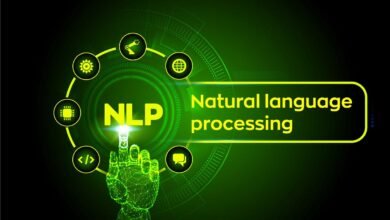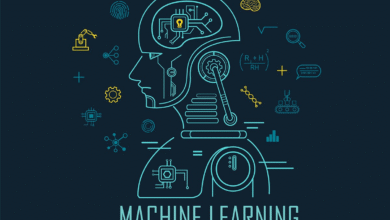
The rapid evolution of artificial intelligence has transformed how businesses operate, how decisions are made, and how society functions at large. However, with this transformative power comes profound responsibility. AI ethics has emerged as a critical framework for ensuring that artificial intelligence systems align with human values, respect fundamental rights, and contribute positively to society. As organizations increasingly deploy machine learning algorithms and AI technologies across various sectors, the need for ethical AI development has never been more urgent.
Building responsible AI systems requires more than technical expertise—it demands a comprehensive understanding of ethical principles, potential risks, and implementation strategies. From healthcare diagnoses to financial lending decisions, AI systems now influence critical aspects of human life. When these systems exhibit bias, lack transparency, or fail accountability measures, the consequences can be severe: discriminatory outcomes, erosion of trust, and potential harm to vulnerable populations. The stakes are exceptionally high, making AI ethics guidelines essential for every organization developing or deploying artificial intelligence.
This comprehensive guide explores the fundamental principles of responsible AI, examining how organizations can integrate ethical considerations into every stage of the AI lifecycle. We’ll delve into core concepts such as fairness in AI, transparency, accountability, and privacy protection—the foundational pillars that distinguish ethical AI from potentially harmful implementations. Whether you’re a data scientist, business leader, policymaker, or simply someone interested in how AI impacts society, this guide provides actionable insights for navigating the complex landscape of AI ethics.
The journey toward responsible artificial intelligence begins with awareness and commitment. By leveraging both the opportunities and challenges inherent in AI development, organizations can create systems that not only perform effectively but also uphold the values we cherish as a society. Let’s explore how to build AI systems that are not just intelligent, but genuinely responsible and trustworthy.
AI Ethics Core Concepts and Importance
What is AI Ethics
AI ethics refers to the moral principles and guidelines that govern the design, development, and deployment of artificial intelligence systems. It encompasses a broad range of considerations, from ensuring algorithmic fairness to protecting user privacy and maintaining human oversight. At its essence, ethical AI seeks to align technological capabilities with human values, ensuring that AI serves humanity’s best interests rather than causing harm.
The field of AI ethics addresses fundamental questions: How do we ensure AI systems treat all individuals fairly? Who is responsible when an algorithm makes a mistake? How can we make AI decision-making processes transparent and understandable? These questions have profound implications for how society integrates artificial intelligence into critical domains such as healthcare, criminal justice, education, and employment.
Why AI Ethics Matters
The importance of ethical AI development cannot be overstated in today’s rapidly evolving technological landscape. AI systems now influence decisions that directly impact people’s lives, from credit approvals to medical diagnoses. Without robust ethical frameworks, these systems can perpetuate and even amplify existing societal biases, leading to discriminatory outcomes that disproportionately affect marginalized communities.
Consider the documented cases of biased algorithms in hiring processes that systematically excluded qualified candidates based on gender or race. Or facial recognition systems that perform significantly worse for people with darker skin tones. These real-world examples demonstrate how AI technologies lacking ethical grounding can cause tangible harm. Responsible AI practices help prevent such outcomes by embedding ethical considerations from the earliest design stages.
Moreover, AI ethics is crucial for building and maintaining public trust. As people become more aware of how AI influences their lives, they increasingly demand transparency and accountability from organizations deploying these technologies. Companies that prioritize ethical AI not only mitigate risks but also gain competitive advantages through enhanced reputation and customer loyalty.
The Stakes of Getting AI Ethics Wrong
The consequences of neglecting AI ethics principles extend beyond individual harm to encompass broader societal impacts. Unethical AI can reinforce systemic inequalities, undermine democratic processes through misinformation, and erode fundamental rights such as privacy and dignity. In sectors like healthcare, biased AI systems could lead to misdiagnoses or unequal access to treatments. In criminal justice, they might result in unjust sentencing decisions.
Financial implications also factor prominently. Organizations face increasing regulatory scrutiny, with governments worldwide implementing AI governance frameworks and accountability measures. Non-compliance can result in substantial fines, legal liabilities, and reputational damage. The European Union’s regulations on AI, for instance, impose strict requirements for high-risk applications, with significant penalties for violations.
Core Principles of Responsible AI Systems

Fairness and Bias Mitigation
- Fairness in AI represents one of the most critical yet challenging aspects of responsible AI development. An AI system is considered fair when it produces equitable outcomes across different demographic groups without discriminating based on protected characteristics such as race, gender, age, or socioeconomic status. However, achieving algorithmic fairness is complex, as “fairness” itself can be defined in multiple ways, and optimizing for one definition may conflict with another.
- Bias in AI typically originates from three primary sources: biased training data, flawed algorithm design, and biased interpretation of results. Historical data often reflects societal prejudices, which machine learning models can learn and perpetuate. For example, if an AI system is trained on hiring data from a company with historically discriminatory practices, it may learn to replicate those biases in its recommendations.
Implementing fairness measures requires proactive strategies throughout the AI lifecycle. This includes diverse and representative training data, regular bias audits, fairness-aware algorithm design, and continuous monitoring of deployed systems. Organizations must also recognize that fairness in AI is not a one-time achievement but an ongoing commitment requiring regular assessment and adjustment.
Transparency and Explainability
Transparency in AI refers to the openness and clarity with which AI systems operate and make decisions. It encompasses both the ability to understand how an AI model reaches its conclusions (explainability) and access to information about the system’s capabilities, limitations, and potential impacts. Explainable AI (XAI) is particularly crucial in high-stakes domains where decisions significantly affect individuals’ lives.
The “black box” problem in artificial intelligence—where even developers cannot fully explain how complex models reach specific decisions—poses serious ethical challenges. When an AI system denies someone a loan or recommends a medical treatment, affected individuals have the right to understand the reasoning behind those decisions. Transparency enables meaningful human oversight, facilitates error detection, and supports accountability.
Organizations can enhance AI transparency through several approaches: using interpretable model architectures when possible, implementing visualization tools that illustrate decision-making processes, providing clear documentation of AI system capabilities and limitations, and offering explanation interfaces for users. However, transparency must be balanced with other considerations such as privacy, security, and intellectual property protection.
Accountability and Governance
Accountability in AI ensures that clear lines of responsibility exist for AI system outcomes, and that appropriate mechanisms are in place for addressing problems when they arise. This principle recognizes that artificial intelligence systems, despite their autonomous capabilities, ultimately remain tools created and deployed by humans who bear responsibility for their impacts.
Establishing AI accountability requires defining roles and responsibilities throughout the AI lifecycle. Who is responsible when an algorithm makes an error—the developers, the deploying organization, or the users? AI governance frameworks help answer these questions by establishing clear policies, oversight mechanisms, and response protocols. These frameworks typically include governance committees, impact assessments, approval processes for high-risk applications, and incident response procedures.
Effective AI governance also involves regular auditing and monitoring of deployed systems. This includes tracking performance metrics, identifying unexpected behaviors, and assessing whether systems continue to operate within established ethical boundaries. Documentation plays a crucial role, providing audit trails that support accountability and enable meaningful oversight by regulators and stakeholders.
Privacy and Data Protection
- Privacy in AI encompasses the protection of personal information throughout the data lifecycle, from collection and storage to processing and sharing. As AI systems typically require large datasets for training and operation, they pose significant privacy risks if not designed and managed carefully. Privacy concerns in AI development span multiple dimensions: unauthorized data collection, re-identification of anonymized data, inference of sensitive attributes, and potential data breaches.
- Responsible AI incorporates privacy-preserving techniques such as differential privacy, federated learning, and data minimization. Differential privacy adds mathematical noise to data or query results, protecting individual privacy while enabling useful analysis. Federated learning allows machine learning models to be trained across decentralized data sources without directly accessing the underlying data. Data minimization limits collection to only what’s necessary for the AI system’s intended purpose.
Compliance with privacy regulations such as the GDPR (General Data Protection Regulation) and CCPA (California Consumer Privacy Act) is not merely a legal obligation but an ethical imperative. These regulations enshrine principles like purpose limitation, data subject rights, and consent that align with broader ethical AI frameworks. Organizations building responsible AI systems must integrate privacy considerations from the design phase, often referred to as “privacy by design.”
Human Oversight and Control
Human oversight ensures that humans remain “in the loop” for critical AI decisions, maintaining ultimate authority and control over artificial intelligence systems. This principle recognizes that while AI can augment human capabilities, it should not completely replace human judgment, particularly in high-stakes scenarios affecting fundamental rights and well-being.
The level of human involvement can vary depending on the context and risk. Some applications may require “human-in-the-loop” systems where humans review and approve every AI decision before implementation. Others might use “human-on-the-loop” approaches where humans monitor AI operations and can intervene when necessary. For lower-risk applications, “human-in-command” architectures may suffice, where humans set overall parameters and periodically review system performance.
Maintaining meaningful human control requires that humans possess an adequate amount of AI capabilities and limitations, have access to relevant information for oversight, and retain a genuine ability to override or modify AI decisions. This becomes challenging when AI systems operate at scales or speeds beyond human capacity to directly supervise every decision. Organizations must therefore design oversight mechanisms appropriate to the specific application context and risk level.
Implementing Ethical AI Practical Strategies
Establishing an AI Ethics Framework
Creating a robust AI ethics framework begins with articulating clear principles aligned with organizational values and societal norms. This framework should address all core ethical dimensions: fairness, transparency, accountability, privacy, and safety. Leading organizations typically develop comprehensive policy documents outlining their commitments to responsible AI and the specific measures they’ll implement to fulfill those commitments.
The framework must translate high-level principles into concrete practices applicable throughout the AI lifecycle. This includes defining ethical requirements for different types of AI applications, establishing review and approval processes, creating metrics for measuring ethical compliance, and specifying documentation standards. Many organizations form dedicated AI ethics committees or boards comprising diverse stakeholders—including ethicists, legal experts, affected community representatives, and technical specialists—to oversee framework implementation.
Successful frameworks balance ambition with practicality. While aspiring toward ideal ethical outcomes, they must also provide clear, actionable guidance that development teams can realistically implement. Regular review and updating ensure the framework evolves alongside technological advances, emerging ethical challenges, and changing societal expectations.
Conducting AI Impact Assessments
AI impact assessments systematically evaluate potential ethical, social, and legal implications before deploying an AI system. Similar to environmental impact assessments, these evaluations help organizations identify and address ethical risks proactively rather than reactively. Comprehensive assessments examine multiple dimensions: potential biases, privacy risks, accountability gaps, transparency challenges, and broader societal impacts.
The assessment process typically involves documenting the AI system’s purpose and intended use cases, identifying stakeholders who might be affected, analyzing potential benefits and harms, evaluating fairness across demographic groups, assessing privacy and security risks, and determining appropriate mitigation strategies. This systematic approach ensures that ethical considerations receive proper attention during development rather than being afterthoughts.
Organizations should conduct impact assessments not once but iteratively throughout the AI lifecycle. Initial assessments during the design phase identify fundamental ethical issues. Subsequent evaluations during development, testing, and deployment phases ensure that ethical AI principles remain integrated as systems evolve. Post-deployment monitoring assesses whether systems perform as expected and whether unanticipated ethical issues emerge in real-world use.
Building Diverse and Inclusive AI Teams
The composition of teams developing AI systems significantly influences ethical outcomes. Diverse teams—encompassing various backgrounds, perspectives, experiences, and expertise—are better positioned to identify potential biases, anticipate different user needs, and design more inclusive systems. Homogeneous teams, conversely, may inadvertently embed their own biases and blind spots into AI technologies.
Diversity in AI development extends across multiple dimensions: demographic diversity (gender, race, ethnicity, age), experiential diversity (different life experiences and perspectives), and disciplinary diversity (combining technical expertise with insights from ethics, social sciences, law, and domain-specific knowledge). This multidimensional approach ensures comprehensive consideration of ethical implications.
Organizations committed to responsible AI actively recruit diverse talent, create inclusive work environments where all voices are heard and valued, provide ethics training to all team members, and facilitate cross-functional collaboration. They recognize that building ethical AI is not solely a technical challenge but requires integrating diverse perspectives throughout the development process.
Implementing Robust Testing and Validation
Testing AI systems for ethical compliance requires going beyond traditional performance metrics to specifically evaluate fairness, robustness, and potential harms. Ethical AI testing employs specialized methodologies: fairness testing examines whether systems produce equitable outcomes across demographic groups, robustness testing assesses performance under adversarial conditions or edge cases, and stress testing evaluates behavior at scale.
Organizations should develop comprehensive test suites that include diverse datasets representing different populations, scenarios testing for potential discriminatory outcomes, adversarial examples designed to reveal vulnerabilities, and edge cases that might expose unexpected behaviors. Bias audits using statistical methods can quantify disparities in system performance or outcomes across groups.
Third-party audits provide additional validation and enhance credibility. Independent auditors can assess AI systems without organizational biases that might influence internal reviews. Some organizations publicly share audit results as part of their transparency commitments, demonstrating accountability and building trust with stakeholders.
Establishing Continuous Monitoring Systems
Responsible AI requires ongoing vigilance rather than one-time verification. AI systems can drift over time as input data distributions shift, unexpected edge cases emerge in production environments, or societal standards evolve. Continuous monitoring detects these changes and enables timely responses before significant harm occurs.
Monitoring systems should track multiple indicators: performance metrics disaggregated by demographic groups to detect emerging biases, user feedback and complaints indicating potential issues, unusual patterns or behaviors suggesting system malfunction, and compliance with established ethical guidelines. Automated monitoring complemented by periodic human review provides comprehensive oversight.
Organizations must also establish clear escalation procedures and response protocols for when monitoring identifies problems. This includes defining thresholds that trigger alerts, specifying who receives alerts and has authority to respond, outlining steps for investigating and addressing issues, and determining when systems should be temporarily suspended while problems are resolved. Well-designed monitoring and response systems enable organizations to maintain ethical AI standards throughout system lifecycles.
Key Challenges in AI Ethics Implementation

The Complexity of Defining Fairness
Achieving fairness in AI proves challenging partly because “fairness” defies a simple definition. Multiple mathematical fairness criteria exist, each capturing different intuitions about what constitutes equitable treatment. For example, demographic parity requires that outcomes be distributed equally across groups, while equal opportunity demands that qualified individuals from all groups have equal chances of positive outcomes. Unfortunately, these criteria can be mathematically incompatible—optimizing for one may preclude achieving another.
Context heavily influences which fairness definition is most appropriate. In lending decisions, equal opportunity might be prioritized to ensure qualified applicants from all backgrounds have fair chances at approval. In medical diagnosis, we might prefer calibration across groups, ensuring that predictions are equally accurate for all populations. The ethical AI challenge lies not in identifying a universal fairness standard but in thoughtfully selecting and implementing appropriate criteria for specific contexts.
Furthermore, fairness considerations often involve tradeoffs with other values such as accuracy or efficiency. An AI system optimized purely for predictive accuracy might produce unfair outcomes, while imposing strict fairness constraints might reduce overall performance. Organizations developing responsible AI must navigate these tradeoffs transparently, making deliberate choices that balance competing considerations while prioritizing ethical imperatives.
Balancing Transparency with Other Concerns
While transparency in AI is ethically important, it sometimes conflicts with other legitimate interests. Revealing detailed information about AI models could expose proprietary algorithms representing significant investments, enable adversaries to game systems or identify vulnerabilities, compromise privacy by making re-identification easier, or overwhelm users with technical complexity they cannot meaningfully interpret.
These tensions require careful balancing rather than absolute transparency. Organizations can provide meaningful transparency without disclosing every technical detail by offering high-level explanations of how systems work, disclosing what data influences decisions, explaining the factors most influential in specific outcomes, and clearly communicating system capabilities and limitations. Layered transparency approaches provide varying levels of detail appropriate for different audiences.
The explainability challenge becomes particularly acute with complex deep learning models, where even developers struggle to fully explain specific predictions. Research into explainable AI seeks technical solutions, but practical deployment often requires accepting some opacity while implementing compensating safeguards like extensive testing, monitoring, and human oversight for high-stakes decisions.
Addressing Global and Cultural Differences
AI ethics is not culturally neutral. Different societies hold varying values, priorities, and perspectives on issues like privacy, autonomy, and collective welfare versus individual rights. Ethical AI frameworks developed in one cultural context may not align with values in others. For example, Western frameworks often emphasize individual privacy and autonomy, while some other cultures prioritize community welfare and collective harmony.
Organizations deploying AI systems globally must navigate this diversity thoughtfully. This might involve adapting AI ethics policies to align with local norms and regulations while maintaining core commitments, engaging with stakeholders from different cultural contexts during development, and conducting culture-specific impact assessments. Simply imposing one culture’s ethical framework globally risks perpetuating a form of technological colonialism.
Legal and regulatory landscapes vary significantly across jurisdictions, adding complexity. The European Union’s rights-based approach differs from other regions’ regulatory philosophies. Organizations must ensure their responsible AI practices comply with applicable regulations in all deployment regions while working toward harmonized global standards that respect legitimate cultural differences.
Resource Constraints and Scalability
Implementing comprehensive ethical AI practices requires substantial resources: specialized expertise, sophisticated tools, extensive testing, ongoing monitoring, and organizational commitment. Smaller organizations or those with limited resources may struggle to implement best practices, potentially creating competitive disadvantages or leaving ethical gaps.
This resource challenge risks concentrating responsible AI development among well-resourced organizations while smaller players deploy less ethical systems. Addressing this requires making AI ethics tools and frameworks more accessible, developing standardized methodologies that reduce implementation costs, providing educational resources and training, and potentially creating shared infrastructure or third-party services that smaller organizations can access.
Scalability also poses challenges. Ethical AI practices that work well for individual systems or small deployments may not scale to organizations managing hundreds of AI applications. Developing scalable governance processes, automated compliance checking, and efficient oversight mechanisms becomes essential as AI adoption accelerates.
Regulatory Landscape and Compliance
Global AI Regulations and Standards
The regulatory landscape for AI ethics has evolved rapidly, with jurisdictions worldwide developing frameworks to govern artificial intelligence development and deployment. The European Union leads with comprehensive regulations, including requirements for high-risk AI applications, mandatory transparency disclosures, and significant penalties for non-compliance. These regulations establish legal obligations around many ethical AI principles, including fairness, transparency, and human oversight.
Other regions are developing their own approaches. Several countries have enacted or proposed AI governance legislation addressing specific sectors or applications. International organizations like UNESCO have established ethical principles for AI systems, though these guidelines are not legally binding. Industry standards and frameworks from organizations like ISO and IEEE provide additional guidance, helping organizations implement responsible AI practices aligned with emerging best practices.
Organizations developing or deploying AI technologies must maintain awareness of applicable regulations across their operational jurisdictions. Compliance requires not just legal requirements but also implementing technical and organizational measures to meet them. Proactive engagement with the regulatory landscape—anticipating future requirements rather than merely reacting to current laws—positions organizations well for evolving AI governance expectations.
Building Compliance Programs
Effective compliance programs translate regulatory requirements into operational practices. This begins with thoroughly applicable laws and regulations, then mapping how existing AI systems and development processes align with or deviate from those requirements. Gap analyses identify areas requiring modification or additional controls.
Comprehensive compliance programs typically include documented policies and procedures, training for relevant personnel, technical controls and safeguards, regular auditing and testing, incident response procedures, and mechanisms for updating practices as regulations evolve. Designating compliance officers or teams with clear authority and responsibility ensures accountability.
Documentation plays a crucial role in demonstrating compliance. Organizations should maintain records of AI impact assessments, testing results, oversight committee decisions, training data provenance, model performance metrics, and incident responses. This documentation serves multiple purposes: supporting internal governance, facilitating regulatory audits, and providing evidence of due diligence should issues arise.
The Future of AI Ethics
Emerging Trends and Technologies
The field of AI ethics continues evolving alongside technological advances. Emerging AI technologies like large language models, generative AI, and autonomous systems introduce novel ethical challenges requiring adapted frameworks and approaches. For instance, generative AI’s ability to create realistic synthetic content raises concerns about misinformation, deepfakes, and intellectual property that traditional AI ethics frameworks may not adequately address.
Research into technical solutions for ethical challenges advances rapidly. Privacy-preserving technologies like federated learning and differential privacy become more sophisticated and practical. Explainable AI techniques improve, making complex models more interpretable. Fairness-aware machine learning algorithms that explicitly optimize for equity while maintaining performance show promise. These technical advances expand the feasibility of responsible AI implementation.
The integration of AI ethics into education and professional development accelerates. Universities increasingly incorporate ethics into computer science and engineering curricula. Professional organizations develop ethics training and certification programs. This growing emphasis on ethics education promises a future generation of AI practitioners with ethical considerations deeply ingrained in their professional practice.
The Role of Stakeholder Engagement
Building truly responsible AI systems requires meaningful engagement with diverse stakeholders, particularly communities that AI systems may affect. Historically, technology development has often proceeded with limited input from impacted populations, resulting in systems that fail to serve their needs or inadvertently cause harm. A more participatory approach to AI development seeks to change this dynamic.
Stakeholder engagement can take various forms: consulting affected communities during design phases, including diverse perspectives in governance structures, creating channels for user feedback and concerns, conducting participatory impact assessments, and empowering communities with greater control over how AI affects them. This engagement should be genuine rather than performative, with stakeholder input meaningfully influencing development decisions.
Civil society organizations, advocacy groups, and researchers play important roles in holding organizations accountable for ethical AI commitments. Their external scrutiny, public reporting, and advocacy efforts complement internal organizational efforts, creating a broader ecosystem supporting responsible AI development. Collaboration between technology developers, civil society, academics, and policymakers can produce more robust and legitimate AI ethics frameworks.
More Read: Cloud Security for AI Protecting Sensitive Data and Models
Conclusion
Building responsible AI systems represents one of the defining challenges of our technological era. As artificial intelligence becomes increasingly integrated into critical aspects of society—from healthcare and education to employment and criminal justice—the ethical foundations of these systems will determine whether they serve as tools for human flourishing or sources of harm and inequality. The principles explored throughout this guide—fairness, transparency, accountability, privacy protection, and human oversight—provide essential frameworks for ensuring AI technologies align with human values and societal good.
However, principles alone are insufficient; they must be translated into concrete practices embedded throughout the AI lifecycle, from initial design through deployment and ongoing monitoring. This requires commitment from organizations, engagement from diverse stakeholders, robust governance structures, and continuous learning as both technology and ethics evolve.
The AI ethics landscape will continue developing, presenting new challenges and requiring adapted approaches. Yet the fundamental imperative remains constant: ensuring that as we build increasingly powerful AI systems, we maintain our humanity, our values, and our commitment to justice, equity, and dignity for all. The path to responsible AI is not always straightforward, but it is unquestionably essential for creating a future where technology genuinely serves the best interests of humanity.











